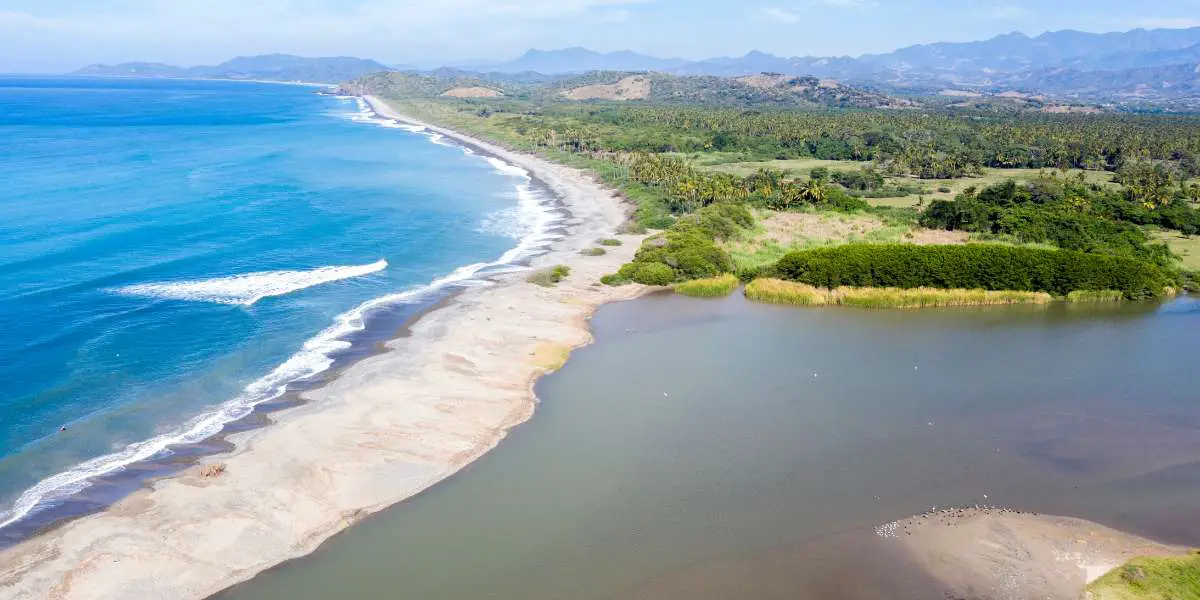Whether you’re vacationing on a budget, or you have the cash to splurge, Thailand has something for every vacation niche. From bustling city life to island paradises, to breathtaking mountaintop views, to sacred temples, Thailand’s diverse offerings ensure that you’ll never have a dull moment while you’re there. But with so much to do, the idea of traveling from spot to spot can be overwhelming.
What kind of transportation options are available in Thailand? Here are ten ways that you can travel around in Thailand:
- Airplane: To/from and around
- Train
- Bus
- Ferry
- Car Rental
- Subway
- Taxi
- Tuk-tuk
- Motorcycle Taxi
- Skytrain (BTS)
Depending on where you want to go and what you want to do, you have several options when it comes to traveling to, in, and around Thailand. It doesn’t matter what your budget is because the pricing options range from value-friendly to luxury splurging. There are several considerations to make with each option, and as with everything, it always pays to be safe and have a plan in motion. The remainder of this article will show you exactly what each transport option entails, and how you can utilize each one to your highest advantage.
10 Ways to Travel in Thailand
It’s important to keep in mind that Thailand is a very large nation with over 69 million people living in it. Even if you’re limiting the scope of your trip to Bangkok alone, you still have 605.6 square miles worth of land that you’ll need to traverse. Luckily, Thailand has several ways to help tourists navigate to their desired location. There are a few things that you should keep in mind before making your final decision, and we’re going to cover each one in-depth.
1. Travel by Air
Kicking off our list is the most convenient, and most expensive way to get around Thailand. Thailand has multiple airports within the country. Their major cities host international airports, but there are a lot of domestic airports within the country as well. Being a major Southeast Asian hub, Bangkok is served by over 70 different airlines (Smarter Travel). The most common spot people tend to land in is Bangkok’s Suvarnabhumi International Airport (BKK). Here are the most popular international airports tourists tend to land in within Thailand:
- Koh Samui (USM)
- Chiang Mai (CNX)
- Hat Yai (HDY)
- Phuket (HKT)
- Don Mueang (DMK)
If you’re landing in Suvarnabhumi, then you’ll receive a proper greeting entering the country, as the airport is rich with Thai art scattered throughout its modern design. However, according to Smarter Travel, you’ll need to “be prepared for long lines at immigration, especially if multiple planes land at the same time as yours.” Getting from the airport to your accommodations shouldn’t be hard as long as you’re prepared.
There is a fleet of taxis outside of the airport prepared to take you to your destination. Most of the locals in Bangkok speak English, but it’s always a good idea to prepare for language barriers that you’ll surely encounter. Have a printed map ready to show the driver with directions written in Thai. Most of the hotels in Bangkok will have this information available for print on their websites.
There is also the option of “Airport Link.” This option has trains that will take you to the Phetchaburi MRT (subway) station or the Phaya Thai BTS (Skytrain) station. If this is the option you want, then make sure you catch the train any time between 6 a.m. to midnight. Otherwise, you’ll need to opt for another option, like a bus or public van.
Do you plan on visiting more than one part of the country? Thailand has multiple domestic airports throughout the country that will get you to where you want to be. This option can essentially get you anywhere in the country in two hours or less, but there are considerations to make before you go and book the cheapest flights. Thailand has multiple airlines to choose from, and they all differ in value and quality.
What airlines operate within Thailand? The largest and most expensive carrier is Thai Airways. Other budget airlines include:
- Thai Smile
- Bangkok Airways
- Thai Lion
- AirAsia
- Nok Air
(Source: Nomadic Matt)
You can expect to pay around $44-200 (1,400-6,600 THB) for flights around Thailand. Flights between different cities tend to be much cheaper than flights to the islands. Be very wary of some of the smallest budget airline options, as they have unclear safety records. Another thing about budget airlines is the extra fees. You’ll save money on the fare itself, but you’ll pay a lot for baggage fees, preferred seating, and credit card processing. The following table reflects sample fares (as of May 2020) for flights around Thailand:
| City – City | One Way Price | Round Trip Price |
| Bangkok to Chiang Mai | $41 | $98 |
| Bangkok to Phuket | $40 | $84 |
| Chiang Mai to Phuket | $92 | $179 |
2. Travel by Train
If you’re looking for a unique way to travel, then Thailand’s railroad network has about 2,500 miles of rail lines that can get you to a lot of places within the country. There are a few things to consider if you want to take the train. While it’s more expensive than taking a bus, the Thai tourism office deems it as the safest way to travel by land. The trains are comfortable, clean, and well maintained. There are three classes of service that you can choose from:
- Third Class: This is the cheapest option available for Train travel. It includes hard-bench seating and lacks air conditioning. This is not to say that it’s a bad option, though. You’ll have the opportunity to meet interesting people, and you can catch numerous vendors that sell cheap, delicious food.
- Second Class: The mid-level price range offers comfort at a notable step higher than the third class. The seats are much softer, and air conditioning is included. You also get multiple choices when you book. You can pick a sleeper fare that offers a fold-down bed and privacy curtains. You can also pick a seated fare that excludes the bed. Keep in mind that some cars have air conditioning, while others only offer a fan.
- First Class: First class can be described as a traveling hotel room. You’ll get a private cabin that includes a private sink and convertible beds. This option is only available on night trains.
If you’re considering travel via train, then be mindful of when you plan on going. Holiday periods book out quite often. If you’re visiting during the busy season, then book your fare as soon as possible. There is no way to purchase train tickets online directly, but you can book with certain travel agents that will purchase your tickets for you at the station and ship them to your hotel or home.
Something about the train that you’ll want to know before booking is that they are very slow. The distance between Bangkok and Chiang Mai is roughly 430 miles, and it takes the night train about 12 hours to travel between destinations. The day train travels even slower, as there are frequent stops.
If you don’t mind the extra travel time, then the train is a wonderful transportation option for moving around Thailand. The views are stunning, and food and drinks will always be available. It’s also a very good option for those on a budget.
3. Travel by Bus
Depending on what location you wish to visit in Thailand, there’s a chance that you cannot get there by plane or train. If this happens, then your next best option is to travel by bus! There are several bus options for your consideration, and they all vary by price and accommodations. Here is a list of the types of buses you can choose from:
- Local
- Express
- Second Class
- First Class
- VIP
- Super VIP
As you may have guessed, the above options go from cheap to luxury. Expect inexpensive buses to be crowded with no air conditioning. They’ll often stop in a number of towns along the way and are even known to pick people up from the side of the road. If you don’t mind this and are not in a rush, then this is a viable option for you. Just make sure that you know exactly where you’re going and let the driver know because you won’t find any signs at the bus stations.
If you don’t mind paying more money, then you can opt for the higher-ranking buses that offer air conditioning, reclined seats, fewer people, and more direct routes designed to take tourists from destination to destination. Here are some reputable VIP companies to look for:
- Green Bus Company
- Transport Company
- Nakhon Chai Air
Bangkok has three different long-distance bus stations. They are all named according to which direction you’re traveling in:
- Eastern Bus Terminal
- Central Northeast and Northern Bus Terminal
- Southern Bus Terminal
It’s highly recommended by the locals that all tourists purchase their tickets at the bus station. This is because of how easy it is to get scammed by certain travel agencies. Be careful when booking with any company besides the one running the bus you’ll be riding on.
4. Travel by Boat
If you plan on visiting the islands in the southern part of Thailand, then you’ll need to catch a ride on a ferry. Booking a ticket is simple, as you can do it online or just show up on the day of travel. It’s cheap to book ferries, but make sure you get on the right one! Most hotels and hostels offer assistance to help you get to the right island at the right time.
It’s very important to consider your safety when selecting a ferry. Because of overcrowded boats, multiple accidents have been reported throughout the years. The ferries are all run by private operators, so always be sure to screen the safety standards of the one you choose.
5. Rent a Car
You can certainly rent a car in Thailand, but please be aware that this is one of the most dangerous options. Bangkok is notorious for its terrible traffic, and the vehicle collision rate is the second-highest in the world. Thais also drive British style, so be prepared to drive on the left side of the road with the driver being on the right side of the car.
All of the major rental companies that you’re familiar with operate in Thailand. In a lot of cases, you only need your regular driver’s license, but certain local agencies require that you have an International Driving Permit. You can get this permit from AAA offices in the United States. (Source: Smarter Travel)
6. Take the Subway
Bangkok’s subway system, referred to as the MRT, is efficient, clean, and modern. It doesn’t stop at many of the important tourist destinations that one would hope, but it’s easy to purchase tickets from the station or automated machines. If you’re trying to catch a train at Hua Lamphong Train Station, then the subway is your best way to get there. It even connects with the Skytrain at Asok and Saladeng.
7. Catch a Cab
Cabs are an easy way to get around in Thailand’s big cities, but there are some factors to consider before hopping into just any cab. As we mentioned above, it’s best to carry a map with your hotel’s location and phone number written in Thai. A lot of hotels are tucked away in hard to find places, so it’s not uncommon for cab drivers to need specific directions from time to time. Most hotels will provide this information on a card that you can take with you.
There might be an extra fee added to the fare if your hotel calls the cab for you, as kickbacks and commissions are often exchanged between services. This is why it’s always better to flag a cab down on your own.
Make sure the cab you choose has a meter that is turned on. Discuss the price before starting the trip. All too often, cab drivers won’t use the meter, and you’ll end up paying much more than you need to.
Make sure you know your desired location and stick to it. Don’t let any cab drivers talk you out of your destination. This is a common scam where they will entice you to go to another location, boasting of its high quality and low prices. It may sound nice, but these alternate places are often of very low quality, and the cab driver collects a commission off of everyone they bring to the location.
8. Experience a Tuk-tuk
Tuk-tuks are three-wheeled open vehicles that offer a unique way to travel the city. Their value is mainly found in the experience they provide, as they will run around the same cost as that of a cab.
Because of their size, they can maneuver traffic easier and get you to your location faster than a cab, but it’s far more dangerous. If you plan on traveling by tuk-tuk, use the same cautionary standards that we mentioned for a taxi. Negotiate the price before getting in; otherwise, you’ll pay far more than what the trip was worth.
9. Ride a Motorcycle Taxi
This option comes with the same warning as above: set the final price before you get on. This transportation option will find you on the back of a motorcycle or scooter holding on to the driver as you go. These are easy to find, as drivers flock the areas around shopping zones or the Skytrain.
You can also rent your own Motorbike to travel around the country at a very low cost. This option is encouraged only if you have experience riding motorbikes, though. Do not attempt to learn in Thailand. The accident rate among tourists who had no prior experience driving motorbikes is very high. Always practice safe measures when you’re on vacation, even if it means paying more money.
10. Take the Skytrain
The Skytrain, which is also known as the BTS, is the safest and most luxurious public transportation option in Bangkok. It allows you to glide through the sky in an air-conditioned cabin, skipping all of the notorious traffic down below. It hits most of the best tourist destinations with multiple stops. Getting a ticket is very simple with manned windows and automatic ticket machines. If you’re staying in Bangkok, it’s highly recommended that you book accommodations close to the Skytrain.
Conclusion
The Land of Smiles has no shortage in variety when it comes to transportation. You can enjoy a stroll through the city on a Tuk-tuk or go island hopping on a ferry. Go above ground on the Skytrain or soar through the underground depths in a subway. Thailand has no shortages when it comes to attractions, foods, and top of the line amenities. You’ll want to see it all, and there are transportation options that will get you from place to place.
As long as you’re keeping your safety as the top priority, being mindful of potential scams, and sticking to your plan, then there is no limit as to what you can accomplish. With the many options available to you, transportation in Thailand should never be a stressor. You can enjoy it as a part of the experience.




